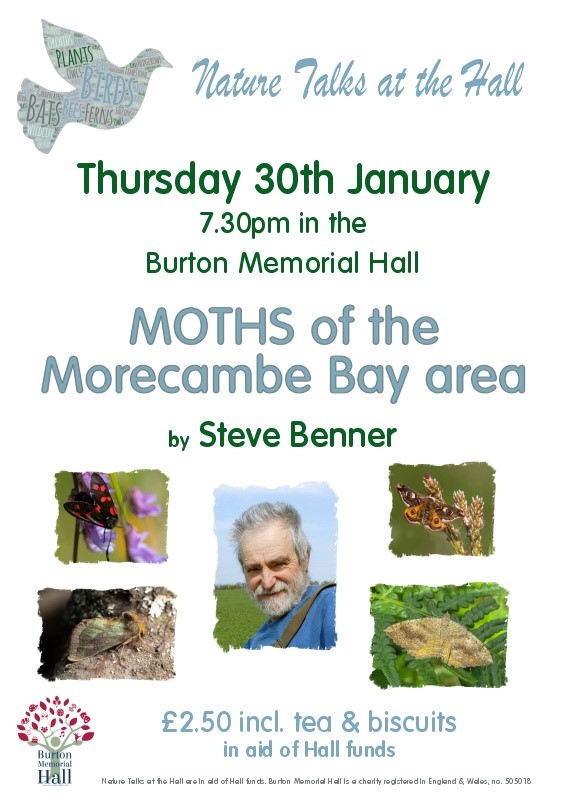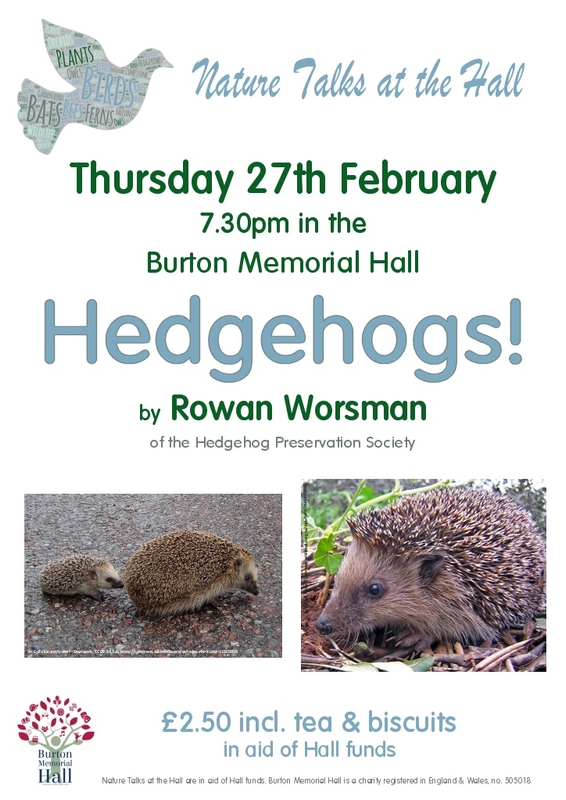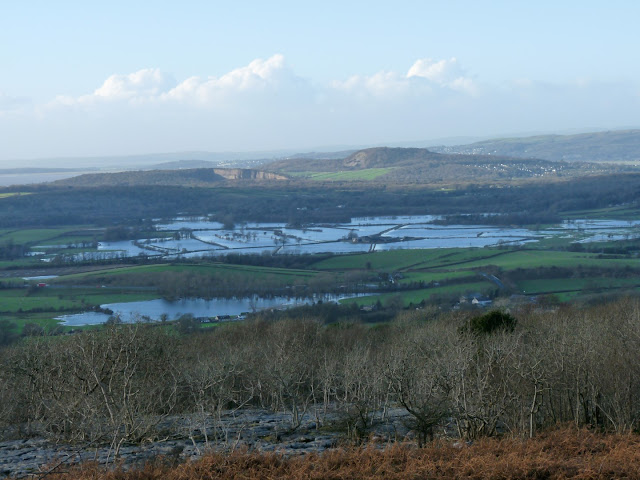 |
| Shows the flooded Mosses with Arnside Knott in the background - photo from Lancelot Clark Storth (Click over photo to enlarge) |
It has been a historic week with record amounts of rainfall throughout our area and the Cumbria area as a whole. Temporary Tarns have been turning up everywhere. So much is currently under water. I took the above photo looking towards Arnside Knott and the Hale Mosses to the West from Lancelot Clark Storth.
I managed to check out Hutton Roof yesterday (9th December 2015), firstly checking out all the sites for the Great Grey Shrike, but nowhere to be found, which more or less indicates that he has not arrived so far this year! I have also noted this year he is also absent as yet from his other Lancashire stronghold sites at Waddington/Stocks areas. The only birdlife this morning was a accidentally flushed Snipe and also a Woodcock.
Showing variations of fronds of the Maidenhair Spleenwort (asplenium trichomanes) - all taken at G2 (Click over photo to enlarge)
I did some Asplenium and Scolly searching and was able to relocate some Green Spleenwort
(asplenium viride). It was good to see that both clumps at this site are OK and I have taken a photo (shown below) which shows the type of habitat the (rare for these parts) viride seems to like, the damp sides of open grykes. Also I managed to get a photo which includes a Maidenhair Spleenwort
(asplenium trichomanes) which allows good comparisons between both of the separate species. Can never help but show interest towards to great variation in some of the fronds. I have here also included a photo showing how much variation there can be amongst the fronds with the viride species. I am surprised to see just how good the fronds look for this time of year!
 |
| This photo shows both Green and Maidenhair Spleenworts in situ and allows good comparison between both species (Click over photo to enlarge) |
I have so far been able to locate 13 clumps of viride at three separate locations over a total area of approx 300 square yards outside of this local area I have has yet not been able to find anymore. They specimens are at a altitude of approx 850ft above sea level and just under the height of the nearby Trig point which stands at (900ft approx). The species is extremely rare in these parts although I believe more common to the Eastern side of the County.
Also I found a new area showing some nice Harts Tongue Fern
(asplenium scolopendrium) variant "Undulatum" and here is a photo of it peeping through the base of a hazel. Just could not get access any closer because of the tree. Also closeby (within one metre) I noticed some Polypody which at first glance looks very much like a Southern Polypody
(Polypodium cambricum), although this cannot yet be confirmed without spore analysis.
 |
| Close up of the Green Spleenwort (Click over to enlarge) |
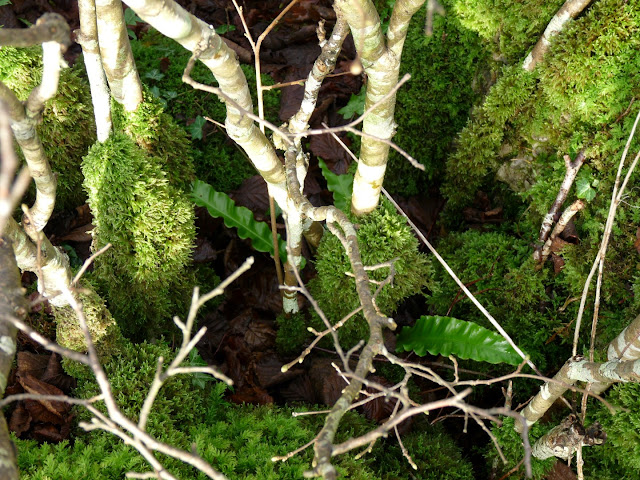 |
| Harts Tongue Fern (asplenium scolopendrium - variant Undulatum) - (Click over to enlarge) |
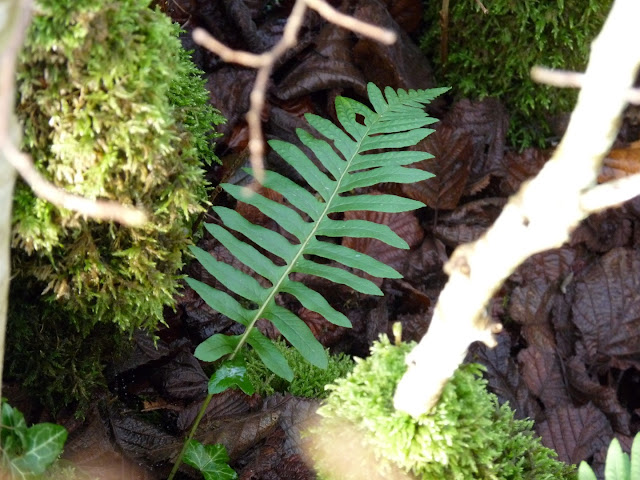 |
| I am quite confident it will turn out to be a Southern Polypody (Polypodium cambricum) (Click over photo to enlarge) |

.jpg)
.jpg)




.jpg)



+(Small).jpg)
.JPG)



















